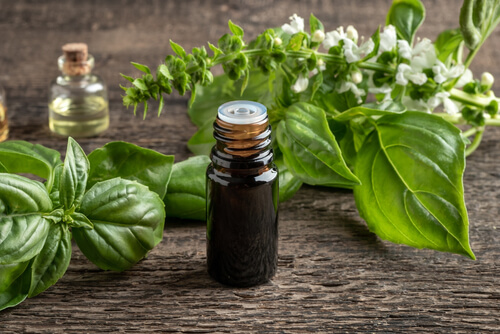
Make your own cold balm - it's so easy!
Your nose is running, your throat is scratchy and you feel really tired. When it's cold outside, colds are not uncommon.
Now it's time to shift down a gear and drink plenty of fluids. In this way, the body can regenerate from the cold in peace and quiet and consequential damage can be avoided. A cold balm can support the healing process in a natural way. We show you how you can easily make your own cold balm. Continue reading....
Gentle relief with cold balms
The essential oils contained in cold balms have an anti-inflammatory effect and stimulate the movement of the cilia in the bronchial tubes. This can loosen mucus more quickly and make breathing through easier in a gentle way. Especially at night, the application of a cold ointment can bring soothing relief and promote restful sleep. This is why many people resort to expensive cold ointments when they have a cold. However, these can be made easily and cheaply with little effort.
The advantages of homemade cold balm
Did you know? Almost all commercial cold ointments contain mineral oils. These have long been suspected of attacking the skin barrier. "Stiftung Warentest" revealed that paraffins derived from petroleum have been proven to promote cancer and damage the skin. But don't worry: almost all commercially available cold ointments can be made quickly and easily yourself. This is easy on the wallet and you also know exactly which ingredients are contained.
Naturally good: essential oils for cold balms
Natural essential oils not only smell good, but have been proven to have a positive effect on our mental and physical well-being. In the plant world, the oils extracted from plant leaves have the task of repelling pests and protecting the plant. We can make use of these properties. Find out about the most popular essential oils that have been proven to relieve cold symptoms in the following overview.
The benefits of essential oils in cold ointments
- Eucalyptus: disinfecting, expectorant
- Spruce needle: calming, anti-inflammatory, expectorant
- St. John's wort: antiseptic, calming
- Chamomile: antibacterial, calming, anti-inflammatory
- Lavender: antimicrobial, anti-inflammatory, analgesic
- Myrtle: antibacterial, anti-inflammatory, analgesic
- Peppermint: antibacterial, anti-inflammatory, analgesic
- Sage: antibacterial, expectorant, analgesic
- Tea tree: antibacterial, anti-inflammatory
- Thyme: antibacterial, anti-inflammatory
Make your own cold balm: 6 rules
Use pure plant oils
When using essential oils, you should make sure that they are purely vegetable oils. They consist mainly of the much healthier unsaturated fatty acids. Pure vegetable oils are always labelled as such and are available in health food shops, organic food shops or online.
Test skin compatibility
To be on the safe side, always test the compatibility of an essential oil on a small, inconspicuous area of skin before applying it. If there is no reaction after 20 minutes, the oil can be used without hesitation. But be careful: essential oils should never be applied undiluted to the skin!
Checking the shelf life of essential oils
Be careful with the expiry date! Some essential oils can only be stored for up to six months after opening and should not be used afterwards. The finished cold balm can be stored in a cool place for several months without any problems. The shelf life can be positively influenced by using sterile utensils when making your own cold balm.
Combining different oils
Essential oils can be combined with each other according to their properties. For example, anti-inflammatory and calming oils can be used in addition. You are welcome to try out a little here, whereby the motto always applies: less is more. Above all, make sure to test the skin compatibility of each oil. Tip: A combination with vitamin E oil has also proven successful. It can replenish the skin's vitamin E stores, improves the skin's barrier protection, has antioxidant properties and can counteract skin ageing.
Use of homemade cold balms
The homemade cold balm can be gently massaged above the chest several times a day as needed. Ointments can also bring relief under the nose and make it easier to breathe. It is strictly not recommended for reddened nostrils! The essential oils can also irritate open skin areas. Especially before going to bed, a homemade cold balm is soothing and helps to calm the respiratory tract and promote restful sleep. Melatonin can provide additional support here.
Do not use for babies, toddlers and pregnant women
Although a homemade cold balm works in a gentle and natural way, caution is advised for babies, toddlers and pregnant women! Essential oils can cause dangerous reactions and should only be used after consulting a doctor.
Make your own cold balm: Basic recipe
Making your own cold balm is quick and easy! Once mixed, it is ready to use at the first sign of a cold and you are prepared.
Cold Balsam Ingredients:
- 50 ml natural, cold-pressed vegetable oil (e.g. olive oil, almond oil or jojoba oil, mixed with
- vitamin E oil if required).
- 5 g natural beeswax
- 4-5 drops of essential oil/s (e.g. eucalyptus or sage oil).
Preparation:
1. To make your own cold balm, place the beeswax together with the vegetable oil in a heatproof bowl and melt in a bain-marie at a low temperature. Stir occasionally.
2. Remove from the heat and leave to cool until the oil-wax mixture is lukewarm.
3. Now add the essential oil of choice or a combination and stir in. You can find out which oils go with the cold balm here. We recommend tea tree, eucalyptus and lavender oil.
4. Pour the finished balm mixture into a sterilised jar or screw-top jar and leave to cool with the lid open. Close carefully with a suitable stopper.
Tip: Label homemade cold balm with the date it was made and store it in the fridge - it will keep longer and is very refreshing when applied.
Have fun making it and stay healthy!
